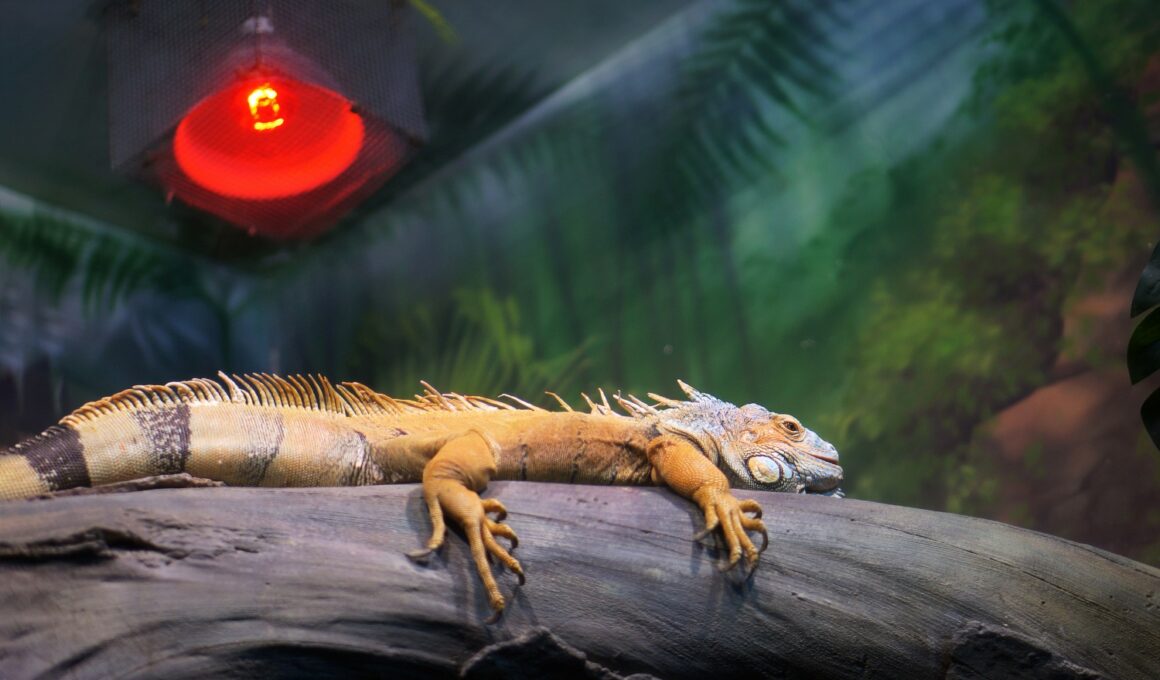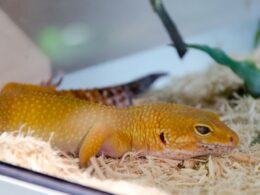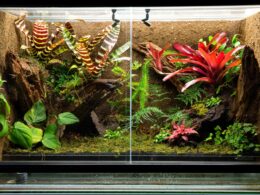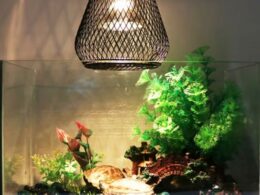In this article Show
If you’re anything like me, you not only have a deep affection for these cold-blooded companions but also an insatiable curiosity about their care.
One of the most common topics I’ve come across in my many evenings spent poring over reptile care is the topic of heat lamps. They’re an essential tool for many reptile owners, but the question often arises: just how safe are they?
Heat plays a pivotal role in the health of our scaly friends. Too little or too much can spell trouble. And while heat lamps are invaluable in providing the warmth many reptiles need, it’s essential to use them correctly. So, let’s dive in and uncover the ins and outs of reptile heat lamps and their safety.
The Need for Heat in Reptiles
Ever noticed how our reptilian buddies love basking in the sun or snuggling up to warm spots in their enclosures? There’s a science behind this behavior, and it’s rooted in their cold-blooded nature. Allow me to explain.
1. The Cold-Blooded Nature of Reptiles
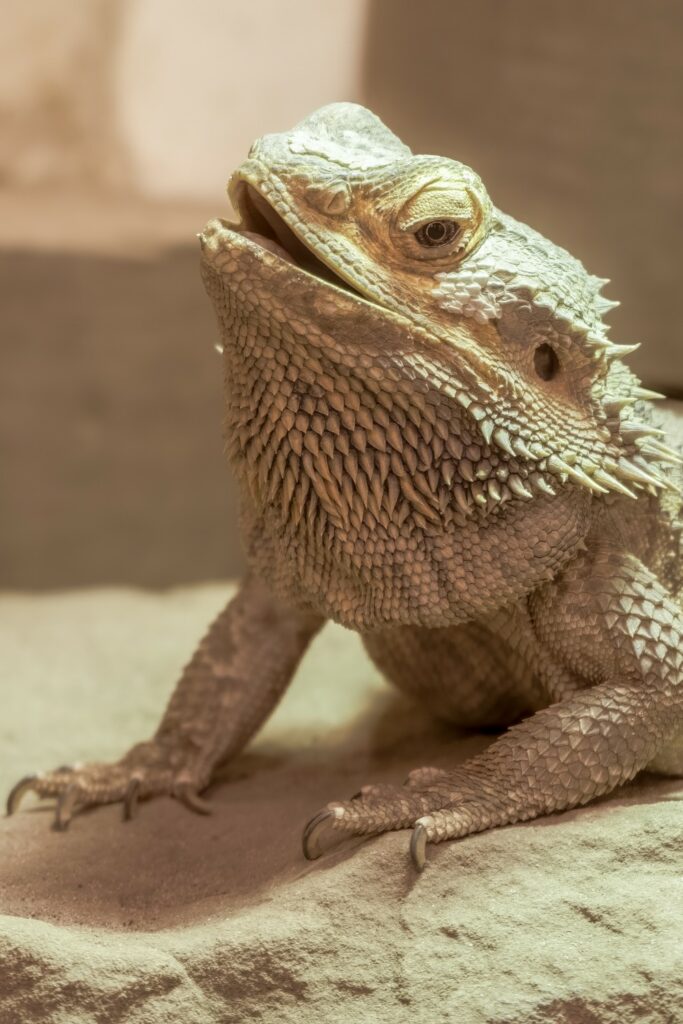
Reptiles are ectothermic, a fancy term that means they rely on external sources to regulate their body temperature. Unlike us humans, who are endothermic and generate our own heat internally, reptiles need a little help from their surroundings.
This is why you’ll often see them lounging about in the sun or seeking shade, depending on their mood and needs. It’s their natural way of thermoregulating.
2. Regulating Body Temperature for Vital Functions
So, why is this regulation so crucial? For starters, their digestion is directly linked to their body temperature. Without the right amount of heat, that juicy cricket or tasty leaf might just sit undigested in their stomachs, which is neither comfortable nor healthy.
Moreover, a stable and appropriate temperature aids in efficient metabolism, ensuring they extract all the nutrients they need from their food.
Beyond digestion, a reptile’s overall health and vitality are intrinsically connected to temperature. Their immune function, activity levels, and even reproduction can be influenced by it. A reptile in the wrong temperature setting might become lethargic, stressed, or even fall sick.
To sum it up
Heat isn’t just a comfort factor for our reptile friends – it’s a lifeline. Ensuring they have the right warmth levels is one of the best things we can do to keep them happy and thriving.
Types of Reptile Heat Lamps
Navigating the world of reptile heat lamps can be a tad overwhelming, especially with so many options on the market. But fret not! Here’s a simple breakdown of the most common types and their unique offerings. This will help you decide which one might be the best fit for your cold-blooded companion.
1. Incandescent Bulbs
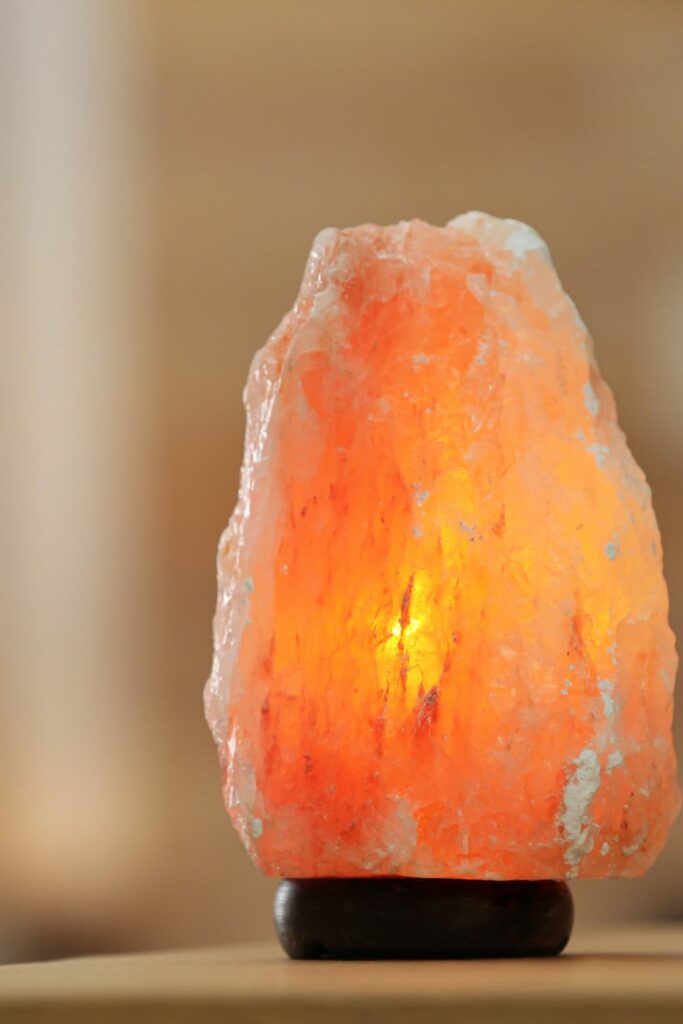
Your typical household bulb has a reptile-friendly variant. These bulbs are a straightforward source of heat and light. They emit a broad spectrum of light, mimicking the natural daylight your reptile would experience in the wild. However, they might not be the most energy-efficient option and can produce a significant amount of light, which might not be suitable for all situations.
2. Ceramic Heat Emitters (CHE)
Think of CHEs as invisible suns for your reptile. They produce no light, making them an excellent choice for 24-hour heating without disturbing your reptile’s day-night cycle. Made from durable ceramic, these emitters provide a consistent heat source. Just make sure they’re safely out of reach, as they can get quite hot.
3. Mercury Vapor Bulbs
These are like the multi-taskers of the reptile heat lamp world. They not only provide heat but also emit UVB light, essential for reptiles to produce vitamin D3. This vitamin helps them absorb calcium, which is crucial for bone health. They might be pricier than your regular bulbs, but they’re worth it for the dual functionality.
4. Infrared Bulbs
Infrared bulbs are the way to go if you’ve ever wanted to give your reptile a little nighttime warmth without lighting up their entire enclosure. They emit a gentle red glow, providing heat without disrupting the natural darkness, making them perfect for nighttime use.
Comparison and Choosing the Right One
- Incandescent bulbs are great for basic heating and natural light simulation. Ideal for diurnal reptiles that thrive with a consistent day-night cycle.
- Ceramic heat emitters are suitable for round-the-clock heating without light interference. They’re particularly helpful for species that need consistent warmth, day and night.
- Mercury vapor bulbs are a top pick if you want heat and UVB light, especially beneficial for reptiles requiring sunlight for calcium syntheses, like bearded dragons and tortoises.
- Infrared bulbs cater to nocturnal reptiles or those who benefit from extra nighttime warmth.
Your reptile’s specific needs, combined with the size and setup of the enclosure, will dictate the best choice. Always keep an eye on temperature gradients and adjust accordingly. And remember, sometimes a combination of heat sources works best!
Safety Concerns with Reptile Heat Lamps
As wonderful as heat lamps are in replicating a reptile’s natural environment, there are a few safety concerns to be mindful of. I’ve learned from my readings and personal experiences that understanding these risks is crucial to ensuring both your and your reptile’s safety. Let’s discuss these concerns in detail.
1. Risk of Burns
Reptiles
Curious creatures that they are, reptiles sometimes get a tad too close to their heat source. This proximity can lead to severe burns. It’s especially common in reptiles like snakes that may coil around or under the heat source.
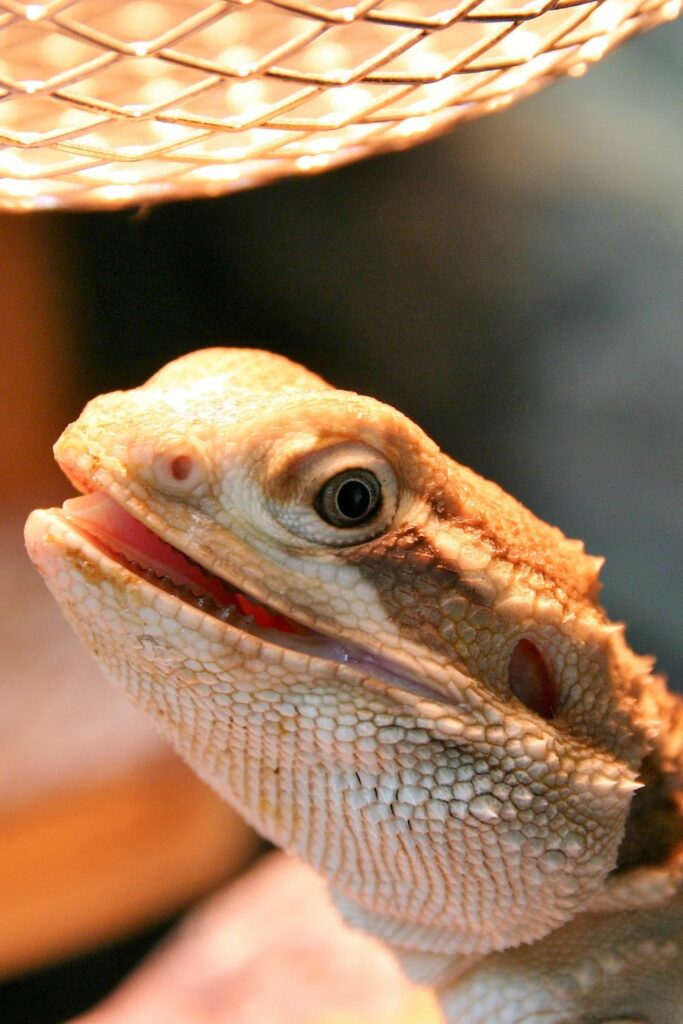
Humans
Let’s face it, we’ve all accidentally touched a hot lamp or surface at some point. With heat lamps reaching high temperatures, there’s a real risk of burns if they’re accidentally touched or mishandled.
2. Fire Hazards
Incorrect Installation
A lamp that’s not properly installed can fall into the enclosure, posing a significant fire risk. Using fixtures that are not designed for the specific bulb or emitter you have can also be problematic.
Proximity to Flammable Materials
Beddings, wooden enclosures, or nearby curtains can catch fire if the lamp is too close. It’s essential to ensure that the heat source is at a safe distance from anything that can easily ignite.
3. UV Exposure
Too much of anything isn’t good, and that includes UV exposure. While UVB light is beneficial for many reptiles, excessive exposure can lead to eye problems and skin issues. It’s a delicate balance, ensuring your reptile gets the UV it needs without overdoing it.
4. Electrical Issues
Faulty Products
Like any electrical device, a malfunctioning heat lamp can be hazardous. Regularly inspect your heat lamps for any signs of wear or damage.
Water Exposure Risks
Reptiles like turtles that need both water and heat can pose an extra challenge. If a heat lamp falls into the water or if water splashes onto it, there’s a risk of electrical shorts or even electrocution.
5. Overheating
Without proper temperature monitoring, there’s a risk of the enclosure getting too hot. Overheating can lead to heat stress in reptiles, manifesting in symptoms like increased panting, lethargy, or even more severe health issues.
To avoid these safety concerns, it’s all about being proactive and attentive. Use the right fixtures, regularly inspect your equipment, and keep a vigilant eye on temperatures. With the right precautions, heat lamps can be both safe and beneficial.
Alternatives to Heat Lamps
Heat lamps are undoubtedly popular in the reptile world, but they’re not the only players in the game. Sometimes, depending on your reptile’s needs or your setup, you might lean towards other heating options. Let’s explore some of these alternatives and their advantages.
1. Heating Pads/Mats (Under Tank Heaters)
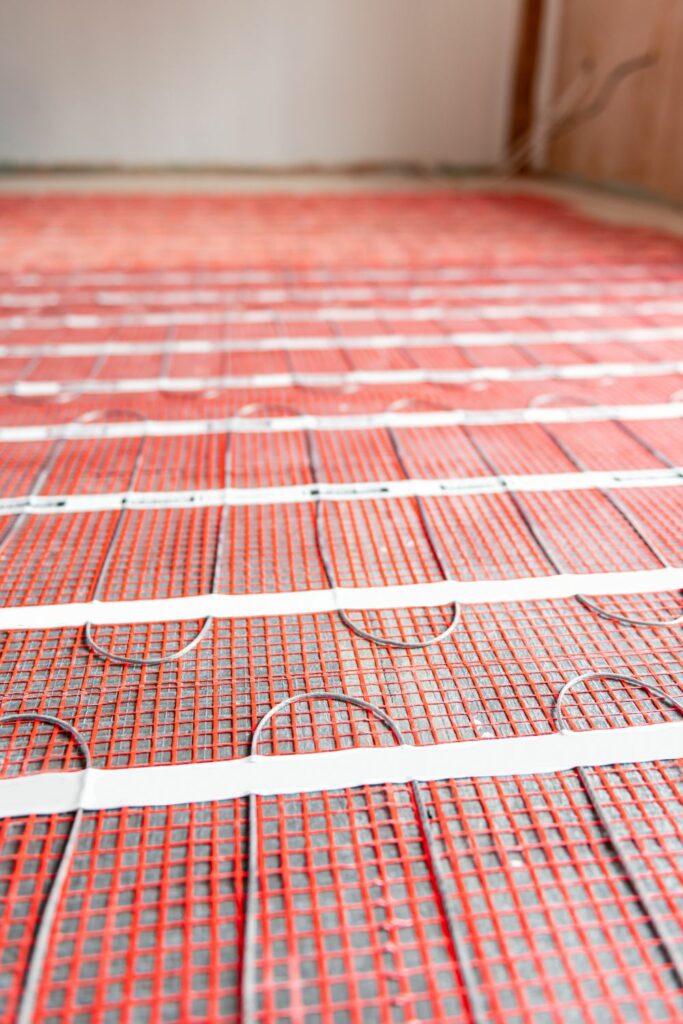
These are devices placed underneath or on the side of the enclosure to provide belly heat. Ideal for reptiles that thrive on ground warmth like many snakes, these pads emit a gentle heat that radiates through the substrate. They’re discreet, energy-efficient, and don’t interfere with the light cycle, making them great for 24-hour use.
However, always use them with a thermostat to prevent overheating, and ensure there’s a layer (like substrate) between the reptile and the heater to prevent burns.
2. Radiant Heat Panels
For those with spacious or tall enclosures, radiant heat panels might be the way to go. Mounted to the ceiling or walls of the enclosure, these panels produce infrared heat, warming the environment without producing light.
They provide an even and wide distribution of warmth, making them particularly effective for larger reptiles or enclosures that need a significant amount of heat without brightness.
3. Heat Rocks
Heat rocks have had their share of controversy. On paper, they seem great – a natural-looking rock that also provides warmth. However, the main issue is their potential for uneven heating. Some parts might become scorching hot, leading to burns, while other parts remain cool.
If you’re inclined to use a heat rock, it’s essential to regularly check its temperature. Some newer models come with built-in thermostats to reduce the risk but always exercise caution and observe your reptile’s behavior around it.
In conclusion, while heat lamps hold a dominant position in reptile care, these alternatives offer flexibility and can be tailored to specific needs. Remember, the ultimate goal is to provide a comfortable and natural environment for your scaly friend. Whichever method you choose, regular monitoring and safety precautions are paramount.
Balancing Safety with Proper Reptile Care
Caring for our reptilian companions often feels like walking a tightrope. On one side, we have their intrinsic need for warmth, and on the other, the potential hazards of providing that heat. But like any balancing act, success lies in understanding, preparation, and vigilance.
1. The Necessity of Heat vs. Potential Hazards
Reptiles, with their ectothermic nature, don’t have the luxury of internally regulating their body temperature. Heat isn’t just about comfort for them; it’s about survival. It impacts their digestion, metabolism, immune function, and overall well-being.
But as we’ve seen, delivering that heat comes with its own set of challenges. From burns and fire risks to electrical hazards and UV exposure concerns, the potential dangers are real.
2. Importance of Observation, Monitoring, and Proper Equipment
This is where the role of a responsible pet owner shines. It’s not just about providing heat; it’s about doing it safely.
Observation
Pay attention to your reptile’s behavior. Are they always hiding away from the heat, or are they constantly trying to get closer to the source? These behaviors can indicate whether your setup is too hot, too cold, or just right.
Monitoring
Use reliable thermometers and thermostats. Regularly check the temperature gradients in the enclosure to ensure there’s a proper warm zone and a cooler retreat. Technology is your friend here, with many advanced devices available that can alert you to temperature fluctuations.
Proper Equipment
Invest in quality. This doesn’t mean the most expensive product on the shelf, but rather equipment that’s been tested, reviewed, and comes with safety certifications. Regularly inspect all heating equipment for signs of wear or damage and replace as needed.
At the heart of it all, it’s a dance between meeting our reptile’s natural needs and ensuring that the means to fulfill those needs are safe. With the right knowledge, equipment, and a sprinkle of attention, you can create a warm, safe, and thriving environment for your cold-blooded friend.





